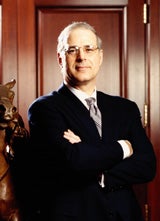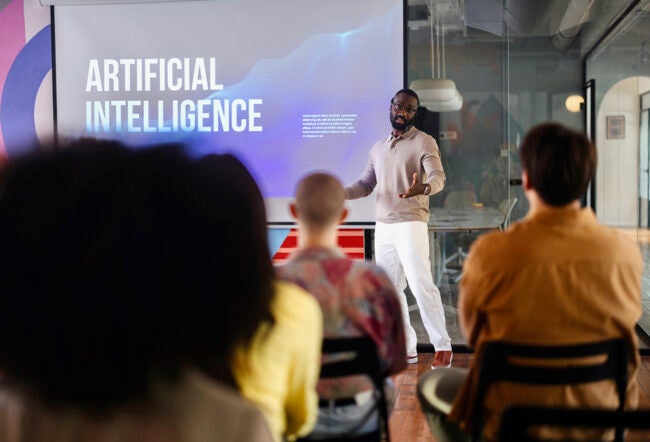The recession and pullback by American consumers have dealt serious blows to the retailing landscape. Yet while some big names have gone under, Polo Ralph Lauren has emerged unscathed from the wreckage, according to company president and chief operating officer Roger Farah, who recently spoke on campus during the University of Pennsylvania’s Fashion Week, an event co-sponsored by Wharton. “Where others were groaning under the weight of loans and borrowed money and working capital constraints, we continued to invest during the last crisis. We did not take our foot off the gas pedal at all.”
To hear Farah tell it, Polo Ralph Lauren’s ambitions have hardly been dampened by the turbulence of the last two years. The $5 billion company is now making a major push into the Asia-Pacific region. After buying back licenses to the company’s products in Japan, China, Hong Kong, Singapore and the rest of Asia, Farah is preparing to build a powerful operation there that he expects will generate one third of the company’s revenues in 10 years. “We are on a 10-year path to reinvent ourselves in Asia,” Farah stated.
Succeeding will require the perfect union of what Farah called “left brain/right brain creativity.” And in many ways that is what Farah’s partnership with founder Ralph Lauren has been all about. Started 43 years ago when Ralph Lauren began with a simple line of ties, Polo Ralph Lauren evolved into a mega-brand that represented an almost Great Gatsby-like American lifestyle. The company went public in 1997 but immediately stumbled, missing earnings estimates. The stock, which hit the market at $33, was mired in the teens when Lauren hired Farah in 2000.
Farah brought a heavy dose of left brain business acumen to Polo Ralph Lauren. Fresh off his job as chairman of Venator Group, the company that would eventually become Foot Locker, Farah began upgrading the less sexy but critical aspects of the business, including supply chain management, technology and distribution. He also began the process of reclaiming control of the Ralph Lauren brand, buying back licenses for the company’s products in Europe and other markets. “We had 1,000 employees when I joined in 2000, and now we have 18,000,” Farah said in an interview with Knowledge at Wharton before his speech. “We developed the management, and we have the balance sheet and talent to run all these businesses now.”
Polo Ralph Lauren today is an amazingly complex machine, he noted. “It is manufacturing, transportation and logistics; currency hedging and financial controls, as well as all the things that go into what the customer actually sees.” The company has what Farah described as a pyramid of brands, with Ralph Lauren’s expensive runway collection at the top. That collection, which includes handmade products using the best materials, has limited distribution. Suits, sportswear and other premium items occupy the middle of the pyramid, and products designed for Kohl’s and JC Penney are on the lower rung. The company produced 175 million products last year in 45 countries and shipped them to more than 9,500 different points of distribution around the world.
On top of that, Polo Ralph Lauren handles advertising and store design in-house, requiring a large internal advertising team and an army of architects and design professionals who not only design the stores and displays for the company’s products, but also scour the world for antiques and flea market finds to make those settings unique. “I can stand here with great confidence and tell you nobody who has stood here before me has ever [handled] that kind of complexity,” Farah told the crowd.
The level of intricacy will only grow as the company begins its offensive in Asia. Farah is hoping to replicate the success Polo Ralph Lauren has had in Europe. After buying back some core apparel and accessory licenses there 10 years ago, the company pumped hundreds of millions of dollars into its operations and built a business that had been just a couple hundred million dollars into a nearly billion dollar operation. On April 15, the company opened a 13,000 square-foot flagship in an historic district in Paris. The progress came despite skepticism that Lauren’s distinctly American image would play well overseas. Farah noted that the brand now portrays less of an American-centric ideal and more of an “aspirational lifestyle” in general. Still, he acknowledged the company is wrestling with how to penetrate the Asian market, a push he said will require customizing some products, from color to fit, for clients in that region.
Of all the challenges Asia presents, however, finding the right people to lead the charge is one of the greatest, Farah stated. To build and manage the business he envisions there, Farah calculates that Polo Ralph Lauren will need an army of thousands of people. “We talk about attracting and developing talent, [but] it is easier to talk about than to do.” That’s one reason he advised students in attendance to think about what the growth of Asia means for their own careers. “When I talk to young people at our company, I say part of our strategy is global, and that may mean over time an opportunity for you to work internationally. They all say ‘Great, I’d love to go to London or Paris’. Well yes, but there may be other parts of the world that have opportunities as well.”
Riding Out the Recession
Polo Ralph Lauren’s ambitions for Asia aside, Farah also acknowledged that the recession has had an impact on the company. Net revenues for the first nine months of fiscal 2010 were down 4% to $3.6 billion, due in large part to the broad drop in consumer spending. Still, the company’s financial footing is solid with $1.3 billion in cash and short term investments on hand. In February, the company announced full year revenue would decline by a low single-digit rate — better than the mid single digit figure expected earlier.
The turmoil of the last two years is certainly impacting how people spend their money, Farah added. “I think the real change in this is not the wealthy customer spending money differently. It is the customer who was operating on borrowed resources. Whether it was excessive credit card debt or home equity loans, [spending by] the segment of the population that was spending today because tomorrow was going to be better … has changed. I think people will spend more in line with what their real income and prospects are.” And that, he said, will be a long-term positive factor for the U.S. economy. “The U.S. savings rate will go up. I think it had gone negative in 2007 and 2008, which means people were spending more than they were making. The U.S. was the only developed nation in the world [in that position].”
Farah suggested that the reach of Polo Ralph Lauren’s brands from high end couture to mass market retailers, like Kohl’s, positions the company well for that shift. “We were already balanced in a way that allowed us to capture changing consumer sentiment,” he noted. “We did not change prices and we did not change marketing or distribution strategies. We obviously managed our balance sheet and our expenses carefully. And we probably shifted some capital to international opportunities. So we are spending proportionally more internationally and less domestically.”
While Farah considers himself the left brain discipline to founder Ralph Lauren’s right brain creativity, he also has a true love of the retail world. He told the crowd that back in 1974 when he left Wharton for a job at Saks Fifth Avenue (he finished his studies early but returned in 1975 for the formal graduation ceremony at the urging of his mother), most of his fellow students were headed to Wall Street or consulting jobs. He figures his starting salary — $8,600 a year– was one half to one third of what others in his class were earning. “A lot of people thought I was crazy. I took a path that was unproven and untested.” But Farah said he knew it was the right road for him. “One of the things that was clear to me was I wanted a diversified day…. And over the course of my career what has been particularly satisfying to me was I had a hand in marketing, finance, design and distribution.”
He insisted that retail was also a great place to test yourself. “Retailing at the time was one of the few businesses where you could operate a fully integrated [company] at 23 or 24 years old. You had product, marketing, distribution and a P&L [profit and loss] statement. Here’s your name and here are your results. I thought that was important.” He started out at Saks and was president of Rich’s/Goldsmith’s Department Stores by the time he was in his mid-thirties. After years with Federated Department Stores, including some of that time running Macy’s, Farah left to head up struggling retailer F.W. Woolworth. In 1997, Farah shuttered the remaining Woolworth stores, focused the company on its Footlocker franchise and renamed the business Venator Group. In 2000, he made the leap to Polo Ralph Lauren.
Having witnessed the end of a once great retailer like Woolworth, Farah noted that Polo Ralph Lauren’s longevity is a rarity. “I was a student here in the mid 1970s, and unfortunately most of the brands that were important then are no longer in business. Part of the reason for that was they did not properly control the distribution and pricing of their brand.” As for the greatest challenge facing Polo Ralph Lauren today, “Our risk is really in the execution,” Farah said. “While we have executed well to this point, we are looking to do some pretty big things. And as a company I think one of our in-house challenges is [asking whether] we are taking on too much at once.”



